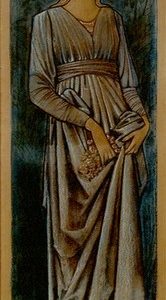One of the most agreeable phrases in the English language is, “This is for you”. A certain brewery has capitalized on the expression with the words, “This Bud’s for you”. A most welcomed phrase for me is “There is mail for you”. It brings to mind that the entire postal system is dedicated to delivering, often from great distances, something that belongs to me. Federal laws ensure that my name as the addressee is honored and protected.
Gifts are usually well received and they also serve the benefactor well. We are beings who are made to give and are happiest when we give from the heart. One of the greatest of all gifts is provided by nature and comes free of charge. Though it does come from the heart, we can say, sadly, that it is often spurned for something of lesser value.
Mechthild of Magdeburg, a thirteenth century mystic, relates a vision she had concerning the milk of the Madonna. In her description of the breastfeeding Christ Child, she writes, “Then the sweet milk flowed from her pure heart painlessly, and the child suckled his food in human wise”. According to the physiology of her time, breast feeding was seen as a gift of heart. This is an instance in which natural human intuition has something more profound to say than what we find in biology text books. Oliver Wendell Holmes understood how nature on its own can be more provident than the brainiest of scientists. Accordingly, he once said, “A pair of substantial mammary glands has the advantage over the two hemispheres of the most learned professor’s brain in the art of compounding a nutritive fluid for infants.” Nature has a bounty for which technology has no adequate substitute.
The universal connotations of mother’s milk flowing from a center of human charity and generosity are perhaps most famously expressed in Shakespeare’s metaphor, “the milk of human kindness”. Mother’s milk is symbolic of a host of natural human virtues. In addition to love, generosity, and kindness, it also includes fidelity, dedication, and hope. These are virtues that have no expiration date.
When St. Augustine said of Mary that “She gave milk to our bread,” he was referring to how her milk enriches the body of Christ and consequently, the Eucharist. In a scientific sense, she fortified the Eucharist with Vitamin D. Her milk, then, is an unbroken stream flowing from the Madonna to her Child, to the Eucharist, and finally to all communicants. Her milk, therefore, is “for” everyone. Mary feeds us, though indirectly, with the milk of her own kindness. The Eucharist may be richer than we think.
While hanging on the cross, Christ prayed from the twenty-second Psalm, “My God, My God, why hast Thou forsaken me?” That same Psalm contains the words, “Thou indeed did bring me forth from the womb; Thou gave me confidence upon my mother’s breast”. At this moment, the beginning and the end of temporal life were brought together.
Breast feeding can be seen as an act of charity. But in addition to this, it is an act of justice, for the mother’s milk belongs to the baby. In other words, the milk is for the baby. The mother, herself, has no particular use for her own milk. It provides her child with nourishment and warmth. It also strengthens the child’s immune system so that it can be better protected from infection and disease. Moreover, the mother’s milk arrives fortuitously at the time of childbirth when feeding her hungry infant is most propitious.
Breastfeeding is the inauguration of the face-to-face relationship. The newborn’s eyes have a natural affinity for the mother’s face to which the infant is spontaneously attracted. Reciprocally, the mother lowers her head as she looks down to her child to establish visual contact. It is love at first sight, a love that needs to be firmly grounded and repeatedly drawn from in order to deal with all the problems that may arise over the years between the mother and her growing child. The benefits of breastfeeding do not represent a mere complementary relationship between mother and child. They prepare and strengthens both mother and child for all subsequent interpersonal relationships.
The demonstrable fact that the milk belongs to the baby establishes the truth that a human being is not an isolated entity riveted to its own selfish needs. The mother is for the child, just as Adam, from whose side Eve was taken, is for his wife, and Christ on the Cross, from whose side gushed blood and water, is for all other human beings. We can say, then, that the husband is for the wife, the mother is for her baby, and the family is for society. Everything about Christianity resonates with the unprepossessing preposition, for. The power of for is fortuitous, formative, formidable, and forward-thinking. We might say that the power of for has the potential to unify the world.
Writing is primarily for the reader, and certainly not for self-aggrandizement. So, too, in the same sense, teaching is for the student, just as parenting is for the child, and nursing is for the patient. Saint Thomas Aquinas taught that the end of the work supersedes the end of the worker. Therefore, the doctor should be more concerned about the health of his patients than his own remunerations.
Jean-Paul Sartre could not have been more wrong when he redefined the human being as a “Being-for-itself” (être-pour-soi). We are beings for others, as testified by the mother breast feeding her young.
The secular world teaches us to think of peace and justice in socio-economic terms. But is there a better place to begin the movement toward peace and justice than with the mother breast feeding her child in a face-to-face, I-Thou relationship?












